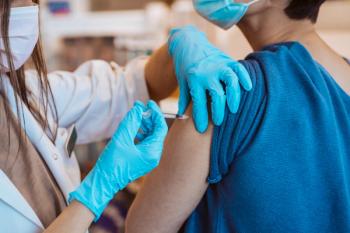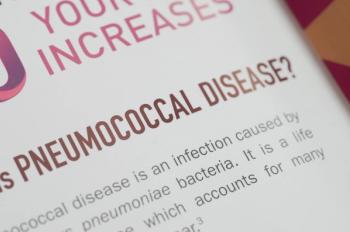
Parent, Health Care Workers Perceptions of Childhood Immunizations Reviewed
Attitudes, behaviors, and barriers to immunizations are examples of themes that affect perceptions of childhood vaccines.
Childhood vaccinations declined globally during the COVID-19 pandemic. In 2021, 25 million children missed at least 1 dose of the diphtheria, tetanus, and pertussis (DTaP) vaccine worldwide.1 This was the largest decline in childhood vaccines in approximately 30 years.1 According to a CDC study, vaccine coverage among kindergarten students in the United States decreased from 95% to approximately 94%;2 at least 250,000 kindergartners are not protected against measles.2
Vaccine hesitancy fueled by misinformation has been a major culprit in the decline in childhood immunizations. Health care workers can play an important role in educating families about the importance of vaccines.
Perceptions of Childhood Immunizations
A recent review, published in Human Vaccines and Immunotherapeutics, examined the perceptions of parents and health care workers toward childhood immunizations.3 Preferred Reporting Items for Systematic Reviews and Meta-Analyses (PRISMA) guideline was used as a search strategy.3 Investigators performed a literature search through the following electronic databases from 2000 to 2021: ClinicalKey, EBSCO, Embase, Google Scholar, ProQuest, PubMed, ScienceDirect, and Scorpus.3 Studies were included that reported on immunizations, barriers, and attitudes and perceptions of parents and health care workers.3
Global qualitative, quantitative, and mixed method studies were considered for the review. The following studies were excluded3:
· Systematic reviews
· Studies with full text unavailable
· Adolescent and adult immunization studies
· Immunization of children older than 5 years of age
· School immunizations
· Studies conducted before the year 2000
The review included 44 studies conducted in Europe, the United States, Canada, Asia, Africa, Australia, and New Zealand.3 Studies involving the perceptions of parents and health care workerstoward childhood immunizations were categorized into the following 4 themes: perceived barriers; parental knowledge, attitude, and behavior; health system factors; and health care worker knowledge, attitude, and behavior.3 Study data were documented and analyzed with the following information: study design characteristics; study participants (parents, caregivers, health care workers); and study outcomes.3
Under the first theme of perceived barriers, factors resulting in a higher risk of not being up to date with the vaccine schedule included3:
· Work schedules
· Distance to the health facility
· Adverse weather on the appointment day
· Being a young mother
· Financial issues
One study also highlighted other perceived barriers, such as poor interaction between health care workersand parents and doubts about vaccination.3 Additionally, concerns about vaccine adverse reactions and a lack of educational information provided were barriers to vaccination. Studies also found that negative media coverage surrounding vaccines created fear and doubts regarding immunizations.3
Studies reported a variety of parental factors that affected vaccination. Education, religious beliefs, limited knowledge about vaccines, and socioeconomic factors were part of the parental knowledge, attitude, and behavior theme. Low maternal education, a patriarchal system (men making the family decisions), and religious beliefs were identified as factors in 10 studies.3 Additionally, 4 articles indicated that personal experiences or an acquaintance’s experience were factors that influenced vaccination decision making.3 The community that parents reside in also plays an important role in vaccine coverage. Two studies revealed that childhood immunization coverage was high among parents with sufficient vaccine knowledge.3 These parents also quoted health care workers as important resources for vaccine information.
Health system factors that resulted in lower immunization rates include language barriers, HCW miscommunication to parents, and poor vaccine reminder systems.3 Two studies discussed that health care workers shared parents’ concerns regarding the amount of vaccine injections children receive at a single visit.3 Trust in health care workers as important sources of information was emphasized in 8 studies.3 Additionally, 2 studies highlighted that health care workers beliefs and attitudes towards immunization can impact vaccine coverage.3 One study also emphasized that a one-size-fits-all approach for providing vaccine information and interventions is not always the best strategy.3
The authors concluded that it’s critical for vaccine providers to be cognizant of barriers to immunization globally.3 Health ministries should communicate vaccine challenges globally to increase vaccine uptake.3 Enhancing communication between parents and health care workers can result in better vaccine uptake and coverage.3 Training workshops and continuing education programs for health care workers that focus on the importance of vaccines are also vital. The CDC offers a variety of training resources for health care workers regarding immunizations. The COVID-19 vaccine training program includes immunization best practices, patient education, storage and handling, and appropriate sharps disposal.4
References:
1. COVID-19 pandemic fuels largest continued backslide in vaccinations in three decades. News release. World Health Organization. July 15, 2022. Accessed February 23, 2023. https://www.who.int/news/item/15-07-2022-covid-19-pandemic-fuels-largest-continued-backslide-in-vaccinations-in-three-decades
2. Seither R, Calhoun K, Yusuf OB, et al. Vaccination coverage with selected vaccines and exemption rates among children in kindergarten—United States, 2021–22 school year. MMWR Morb Mortal Wkly Rep 2023;72(2):26-32. doi: 10.15585/mmwr.mm7202a2
3. Balgovind P, Mohammadnezhad M. Factors affecting childhood immunization: Thematic analysis of parents and healthcare workers’ perceptions. Hum Vaccin Immunother. 2022;18(6):2137338. doi: 10.1080/21645515.2022.2137338
4. Training and education. CDC. Reviewed April 14, 2022. Accessed February 25, 2023. https://www.cdc.gov/vaccines/covid-19/training-education/index.html
Newsletter
Pharmacy practice is always changing. Stay ahead of the curve with the Drug Topics newsletter and get the latest drug information, industry trends, and patient care tips.





















































































































































